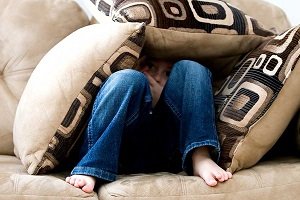How to Get Rid of Dysphoric Mania
TweetThe presence of a depressed or unpleasant mood during an episode of Mania produces a clinical picture called Dysphoric Mania.
Dysphoric features are statistically salient in patients with mania, and the bimodal distribution of the dysphoria factor is consistent with the possibility that mixed bipolar disorder is a distinct state.
Manic and depressed states are not mutually exclusive. Their combination in mixed states has been repeatedly described since Kraepelin. The mixed state, also called depressed or dysphoric mania, is common, potentially severe, can be difficult to treat, and has the potential to reveal much about the psychopathology and pathophysiology of manic depressive illness. Yet, the lack of clear definition and boundaries for mixed states hinders definitive research and clinical work.
Most definitions of mixed states have relied on the application of predetermined criteria for depressed symptoms or depressed syndromes to groups of patients meeting diagnostic criteria for mania . These definitions leave two basic problems unsolved:
1) whether there is a naturalistic division of manic episodes into depressed and nondepressed types, as opposed to a random or continuous distribution of depressed symptoms across patients with manic episodes and
2) the specificity of mixed states themselves - for example, whether there are distinct depressed and dysphoric manic states.
Criteria for Dysphoric Mania or Hypomania
- Full manic or hypomanic syndrome by DSM-III-R criteria
- Simultaneous presence of at least 3 associated depressive symptoms of major depression
It has been suggested that Dysphoric Mania may represent a more severe form of Mania (progressing from Hypomania to Euphoric Mania and to Dysphoric Mania). Others consider Dysphoric Mania a separate, independent form of illness with characteristic clinical and therapeutic features.
Dysphoric mania induced by high-dose mirtazapine:
a case for 'norepinephrine syndrome'?
--ABSTRACT
The antidepressant mirtazapine antagonizes central presynaptic alpha2-adrenergic auto- and heteroreceptors resulting in increased central norepinephrine and serotonin activity. Histamine H2 receptors are also antagonized, as are postsynaptic serotonin 5-HT2 and 5-HT3 receptors, leading to serotonergic activity primarily via 5-HT1A receptors. Based on the case report of a patient who developed mania with higher than recommended dosage of mirtazapine, we review the literature on the atypical nature of manic symptoms with mirtazapine. Eight subjects, including those in our study, were identified as having developed mirtazapine-induced mania with atypical features, consisting of dysphoria, irritability, insomnia, psychomotor agitation and abnormal gait. Predisposing features may have included the presence of underlying brain dysfunction and certain selective serotonin reuptake inhibitor-mirtazapine combinations. Dysphoric mania with atypical features may be induced by mirtazapine, providing support for a common hypothesis such as 'central norepinephrine hyperactivity' as the basis for development of mania with mirtazapine.


Sometimes crying or laughing
are the only options left,
and laughing feels better right now.

Current Issue
 Self Help Leaflets Take the help of our self help leaflets or booklets. |
 The DG Magazine All about living with depression |


















